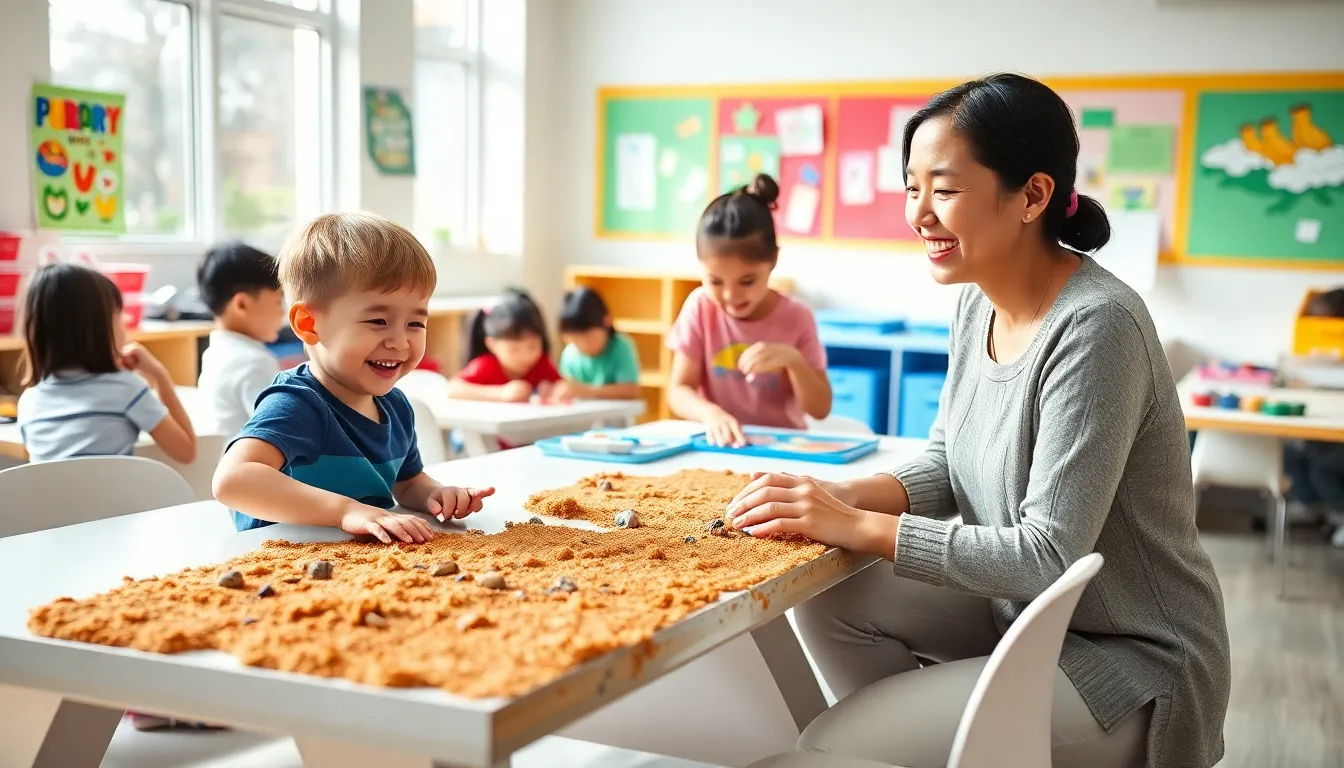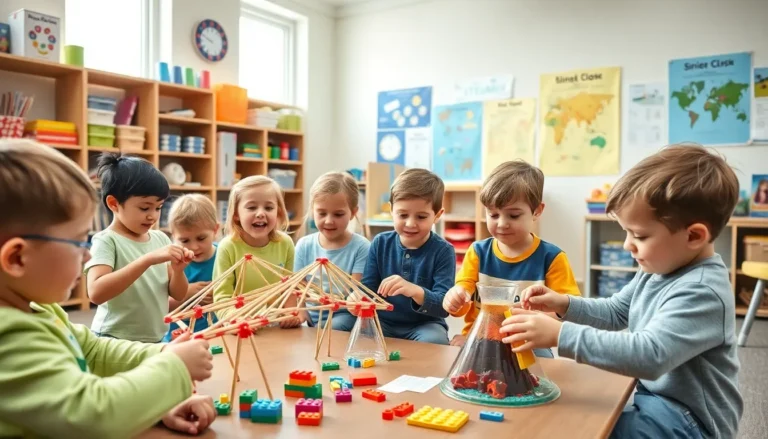Table of Contents
ToggleWhen it comes to understanding kids with special needs, it’s a lot like visiting a theme park you’ve never seen before. Sure, you might know the basics, there are roller coasters, cotton candy, and maybe a merry-go-round. But dig a little deeper, and you realize every attraction has a story, a purpose, and a unique thrill. Kids with special needs aren’t simply defined by their challenges: they embody resilience, creativity, and the endless possibilities that life holds. If you’re ready for a fun and enlightening ride through the complexities and joys of this often-misunderstood world, buckle up.
Understanding Special Needs

Special needs encompass a wide range of conditions and circumstances that affect a child’s physical, cognitive, emotional, or behavioral development. Recognizing that each child is unique is crucial. Children with special needs might be diagnosed with autism spectrum disorder, attention-deficit hyperactivity disorder (ADHD), learning disabilities, or physical disabilities like cerebral palsy. Understanding these conditions means appreciating not just the difficulties they present but also the potential these children have. It takes patience and love to nurture their growth, and the journey is as beneficial for the caregivers as it is for the children. After all, special needs is not merely a label: it’s a part of a colorful spectrum of human diversity.
Types of Special Needs
Special needs are often categorized into several types, each with its own nuances:
1. Physical Disabilities
These include conditions affecting mobility and dexterity. Children with conditions like muscular dystrophy or limb differences may need assistive devices to navigate their world.
2. Developmental Disabilities
This category covers a range of disorders, such as autism and intellectual disabilities, which impact a child’s overall development and daily functioning.
3. Emotional and Behavioral Disorders
Conditions such as anxiety disorders, depression, and bipolar disorder fall into this realm. Support and understanding are vital here: these children often experience the world much differently.
4. Learning Disabilities
Dyslexia, dyscalculia, and other learning disabilities challenge a child’s ability to process information normally, requiring tailored educational strategies.
Each type of special need requires sensitivity and a different approach. Teaching strategies and emotional support systems must be adapted accordingly.
Challenges Faced by Kids With Special Needs
Kids with special needs face a variety of challenges that can make their everyday experiences unique. For instance, social interactions might be difficult, especially for children on the autism spectrum. Imagine navigating a game of tag with the added pressure of understanding social cues, it’s like trying to solve a Rubik’s cube while balancing on a tightrope.
Also, these children often confront physical barriers. Accessible play areas and transportation services are essential, but not always available. Learning environments can pose challenges too: classrooms are sometimes ill-equipped to accommodate diverse learning needs.
Let’s not forget about emotional hurdles. Experiencing constant differences can lead to feelings of isolation. It may be crucial to instill resilience and adaptability in these kids, fostering confidence to overcome such challenges.
Supporting a Child With Special Needs
Supporting a child with special needs is a multifaceted responsibility. First and foremost, love and patience are foundational. The emotional backing creates a safe space for the child to express themselves without fear of judgment.
Practical Strategies
- Professional Support: Teachers, therapists, and counselors should be part of the child’s support system.
- Consistent Routines: Children thrive on predictability, so establishing a daily routine can reduce anxiety and create a sense of security.
- Encourage Communication: Building effective communication helps children express their feelings and needs effectively.
Advocacy
Also, advocating for the child in school settings ensures they receive the support and resources they need to succeed. This might involve communicating with teachers and administrative staff to modify learning strategies.
Role of Family and Community
Family and community play pivotal roles in the development and well-being of children with special needs. Parents are often the first advocates, working tirelessly to ensure their child receives the best possible care and education. This can involve attending IEP meetings, researching available resources, and connecting with other parents for comfort and advice.
Also, community involvement is equally essential. Support groups, recreational programs, and inclusive educational systems foster an environment where kids can flourish alongside their peers. This not only enriches the child’s experience but also helps break barriers, promoting understanding and acceptance in the wider community.
Social Connections
Encouraging friendships can enhance emotional development, making social interaction less daunting for these children. Friends can sometimes help bridge gaps in communication and understanding, creating joyful moments for everyone involved.
Educational Strategies and Resources
Education is a vital component of supporting children with special needs. Here are several strategies that have proven effective:
1. Individualized Education Plans (IEPs)
Every child should have an IEP tailored to their specific needs. This legal document outlines personalized learning goals and instructional strategies.
2. Assistive Technology
Tools, such as speech-to-text software or specialized reading programs, can make learning more accessible. With the right technology, the sky’s the limit.
3. Inclusive Classrooms
Creating an inclusive environment where all students learn together benefits everyone involved. Collaboration between general education and special education teachers can foster an adaptive learning atmosphere.
4. Resource Availability
Educators should be well-equipped with resources to support varied learning needs, from books to sensory tools. Continuing education and training are crucial for teachers navigating these diverse classrooms effectively.
These educational strategies collectively enhance learning experiences and ensure every child has the opportunity to reach their potential.






